Computation Chemistry & Structural Biology

Subheading
التحديث
Serial testing of compound library substances
Only molecules that can inhibit or activate the target (i.e. a target protein that plays an active role in the disease process) are suitable as a basis for the development of active substances. In their search for relevant molecules, the researchers scour huge stocks of substances. They are assisted in this by a state-of-the-art process called high-throughput screening (HTS), a computer-based serial-testing method using robotic systems. The extremely high throughput makes it possible to examine 300,000 compounds a day, so that it only takes a few weeks to screen millions of substances.
Robots do the testing on a miniature scale
Before HTS begins, the Bayer researchers develop special activity assays, a task that can take several months. The aim of these assays is to indicate whether a substance reacts biochemically with the target – for example whether it binds to the target protein, triggers enzymatic reactions, or activates signaling pathways. Furthermore, the assays must be suitable for use in automated processes and get results even using the tiniest amounts of compounds. To make sure that the reaction can be measured later, each assay contains a marker that emits a light signal when the reaction has taken place.

These assays go into 'mass production' in high-throughput screening. Robot systems fill millions of reaction vessels with the assays – each vessel containing exactly 50 nanoliters of fluid. The reaction vessels are tiny wells in so-called microtiter plates. Each panel has 1,536 of these wells. This means that 1,536 biochemical or cell-based (pharmacological) assays are performed simultaneously on a single microtiter plate – and thousands of these are used in a single HTS run.
Fluorescent light reveals hits
At Bayer the HTS serial test is generally used to systematically scour the in-house compound library, which currently contains more than four million chemical compounds. Scientists use different detection methods to recognize a hit – i.e. a positive reaction between the assay substance and the target molecule. They often use highly sensitive cameras (with extremely light-sensitive CCD sensors) to pick up fluorescent light that is released after a substance has bound to a target protein. A computer-assisted analysis of the amount of light then indicates which compounds have reacted with the target and can therefore be considered drug candidates

